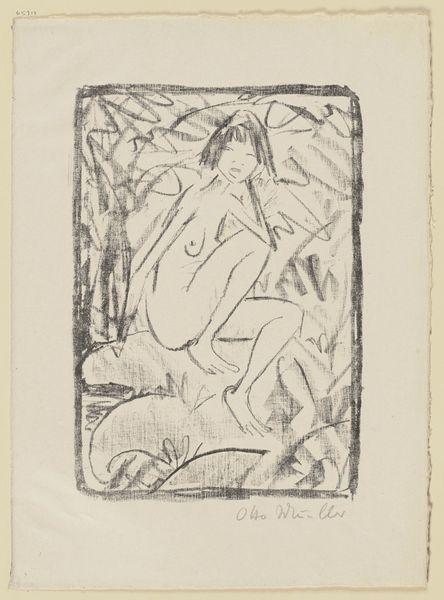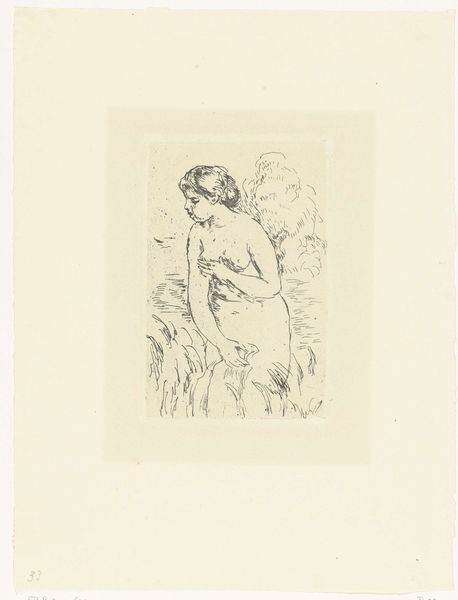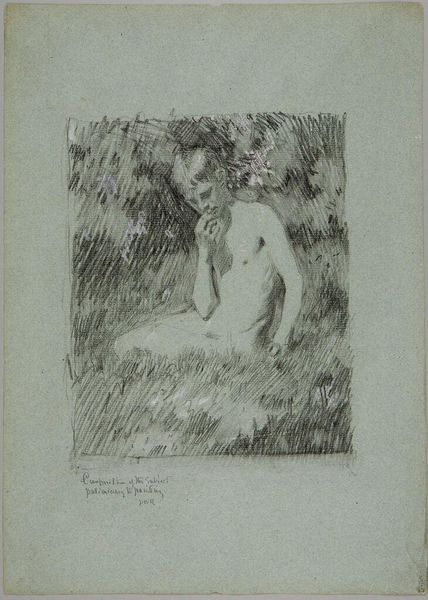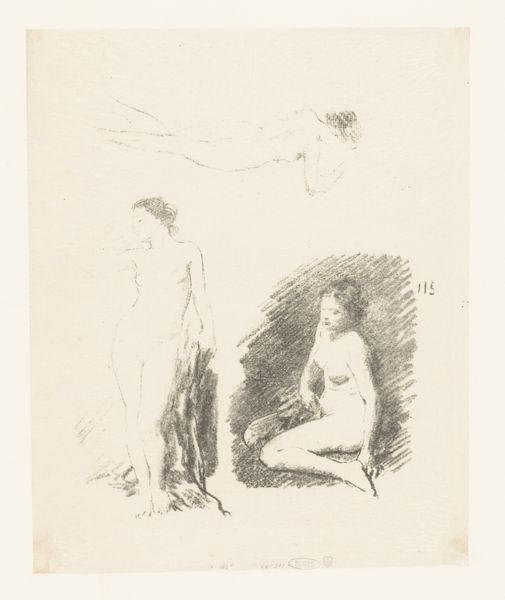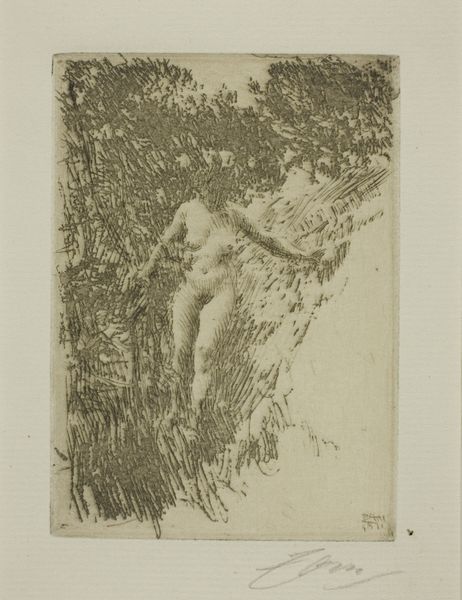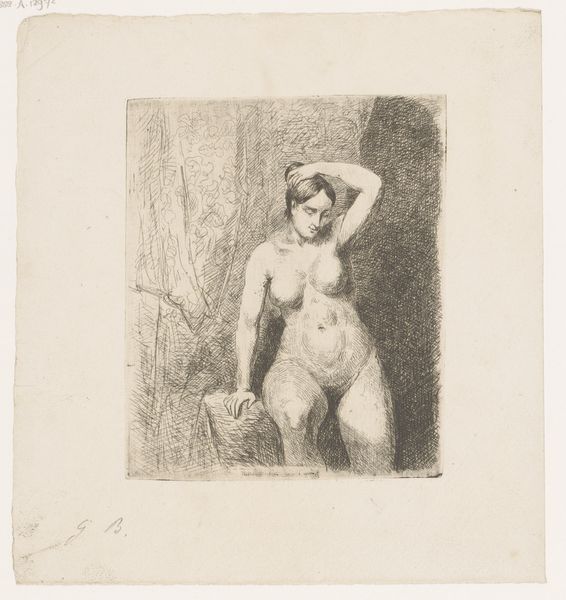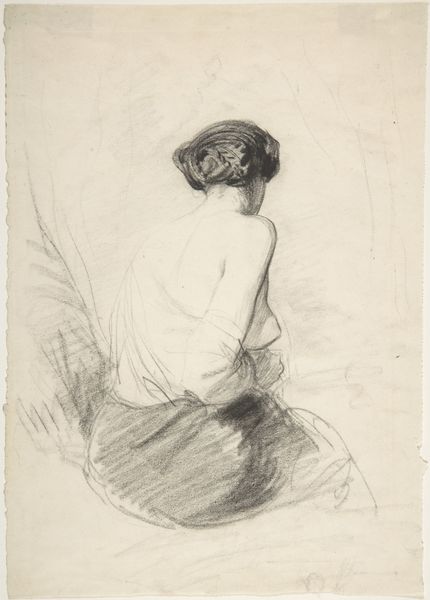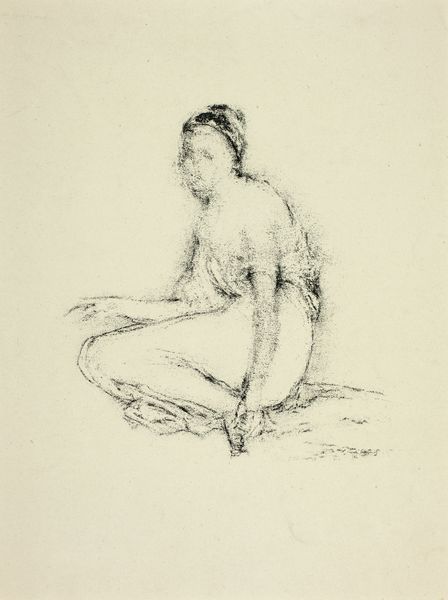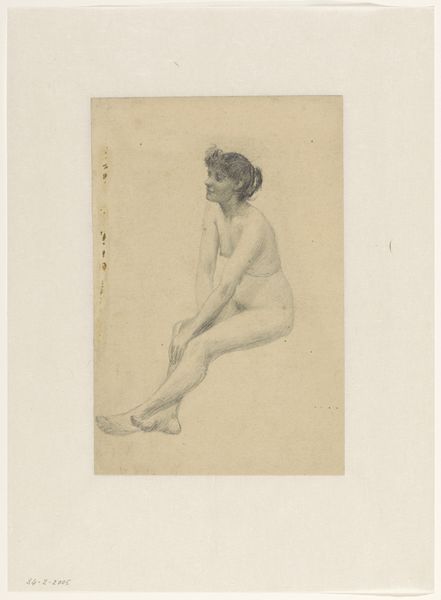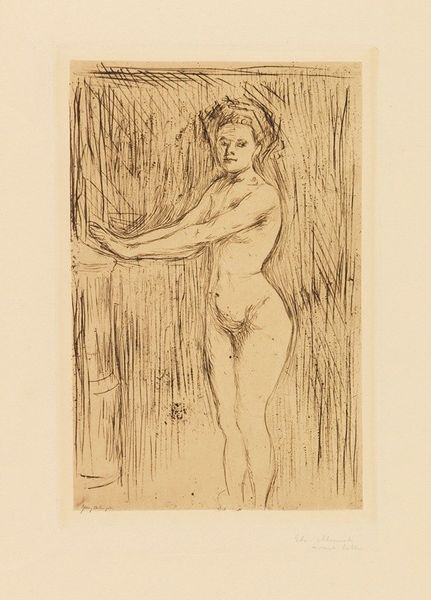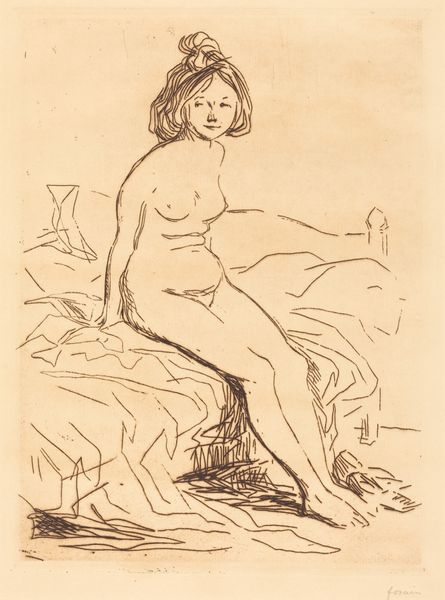
Dimensions: 171 × 111 mm (image); 171 × 111 mm (plate); 248 × 155 mm (sheet)
Copyright: Public Domain
Curator: This is "Standing Bather," a c. 1910 etching by Pierre-Auguste Renoir. Editor: It feels so intimate, almost as if we've stumbled upon a private moment. The soft lines, the way the figure is partially obscured by what looks like reeds… it's sensual, but not overtly so. Curator: Exactly. Let's think about the role of the female nude within Impressionism. Renoir often depicted women in leisurely, natural settings. What narratives are present? This piece comes at a turning point in Renoir’s practice. Editor: I wonder how this piece was received, particularly regarding the male gaze and questions surrounding it. Did it challenge, subvert, or perpetuate then-accepted views? Renoir situates his model comfortably, it suggests female agency. It offers an idea of female form without excessive adornment, a figure situated in nature as nature. Curator: The print medium itself is also telling. It allowed for wider distribution, making art more accessible to a growing middle class and influencing ideas and aesthetic sensibilities within that expanded public. And how did museums, and the art market, play into elevating Renoir, shaping our understanding? Editor: And think about how art schools often presented these works to students as canonical examples of aesthetic value! How do we start untangling and interrogating ideas of ‘universal beauty’ by taking a more nuanced look at their historical context? Curator: It definitely demands further thought. How institutions curate works can subtly shape how the public perceives them. Editor: Definitely food for thought! It's easy to get swept up in the aesthetic of something like this, but stepping back and engaging in its social and political context adds crucial layers.
Comments
No comments
Be the first to comment and join the conversation on the ultimate creative platform.
